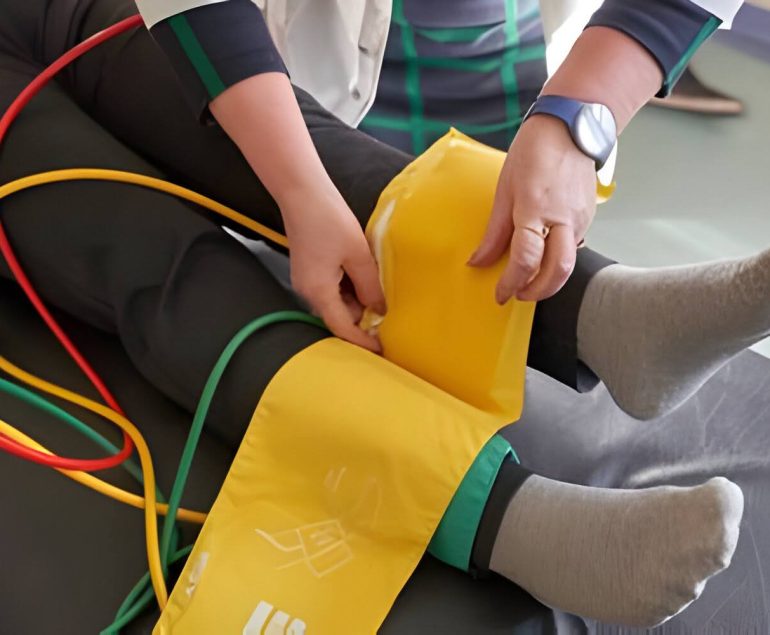A treadmill stress test, also known as an exercise stress test or exercise ECG, is a diagnostic test used to evaluate the heart’s response to physical activity and assess its function under stress conditions. It is commonly used to diagnose coronary artery disease (CAD), evaluate symptoms such as chest pain or shortness of breath, and assess overall cardiovascular fitness.
Treadmill stress testing typically involves along blood pressure monitoring and exercise, typically involving a treadmill or bicycle. This form of stress testing is generally performed according to protocols. However, patients unable to exercise can sometimes still undergo this test with the administration of a pharmacologic agent that stimulates the heart’s activity, simulating exercise-induced changes.
Procedure
During a treadmill stress test, the patient walks or runs on a treadmill while their heart rate, blood pressure, and electrocardiogram (ECG) are monitored. The test typically begins with a warm-up period during which the treadmill speed and incline gradually increase. The patient is encouraged to walk or run until they reach their target heart rate or until symptoms such as chest pain, fatigue, or shortness of breath occur. The test may be stopped earlier if the patient experiences significant symptoms or if certain predetermined endpoints are reached. Uses of Treadmill Stress Test Treadmill stress tests are used for various diagnostic and prognostic purposes, including:- Diagnosing CAD: Treadmill stress tests can detect abnormalities in the heart’s electrical activity (such as ST-segment depression) that may indicate reduced blood flow to the heart muscle due to narrowed or blocked coronary arteries.
- Assessing Exercise Capacity: Treadmill stress tests measure how well the heart and lungs function during exercise and provide valuable information about overall cardiovascular fitness.
- Evaluating Symptoms: Treadmill stress tests help evaluate symptoms such as chest pain, shortness of breath, or palpitations and determine whether they are related to heart disease or other causes.
- Assessing Treatment Response: Treadmill stress tests may be used to assess the effectiveness of treatments for CAD or other cardiovascular conditions, such as medication therapy or cardiac rehabilitation.
- Risk Stratification: Treadmill stress tests help identify individuals at increased risk of adverse cardiovascular events, such as heart attack or sudden cardiac death, based on their exercise capacity and ECG response.
Types of Treadmill Stress Tests
There are several variations of treadmill stress tests, including:- Standard Exercise Stress Test: Involves continuous monitoring of ECG, blood pressure, and symptoms during exercise on a treadmill.
- Nuclear Stress Test: Combines exercise stress testing with the injection of a radioactive tracer to assess blood flow to the heart muscle at rest and during exercise.
- Stress Echocardiogram: Combines exercise stress testing with echocardiography (ultrasound imaging of the heart) to evaluate heart function and blood flow during exercise.
Risks and Considerations
Treadmill stress tests are generally safe, but they carry some risks, including:- Cardiovascular Events: In rare cases, exercise stress testing can trigger cardiovascular events such as heart attack, arrhythmias, or sudden cardiac arrest, particularly in individuals with underlying heart disease.
- Musculoskeletal Injuries: Exercise stress testing may exacerbate musculoskeletal injuries or cause falls, particularly in individuals with mobility limitations.
- Interpretation Challenges: False-positive or false-negative results can occur, leading to incorrect diagnoses or inappropriate treatment decisions.




